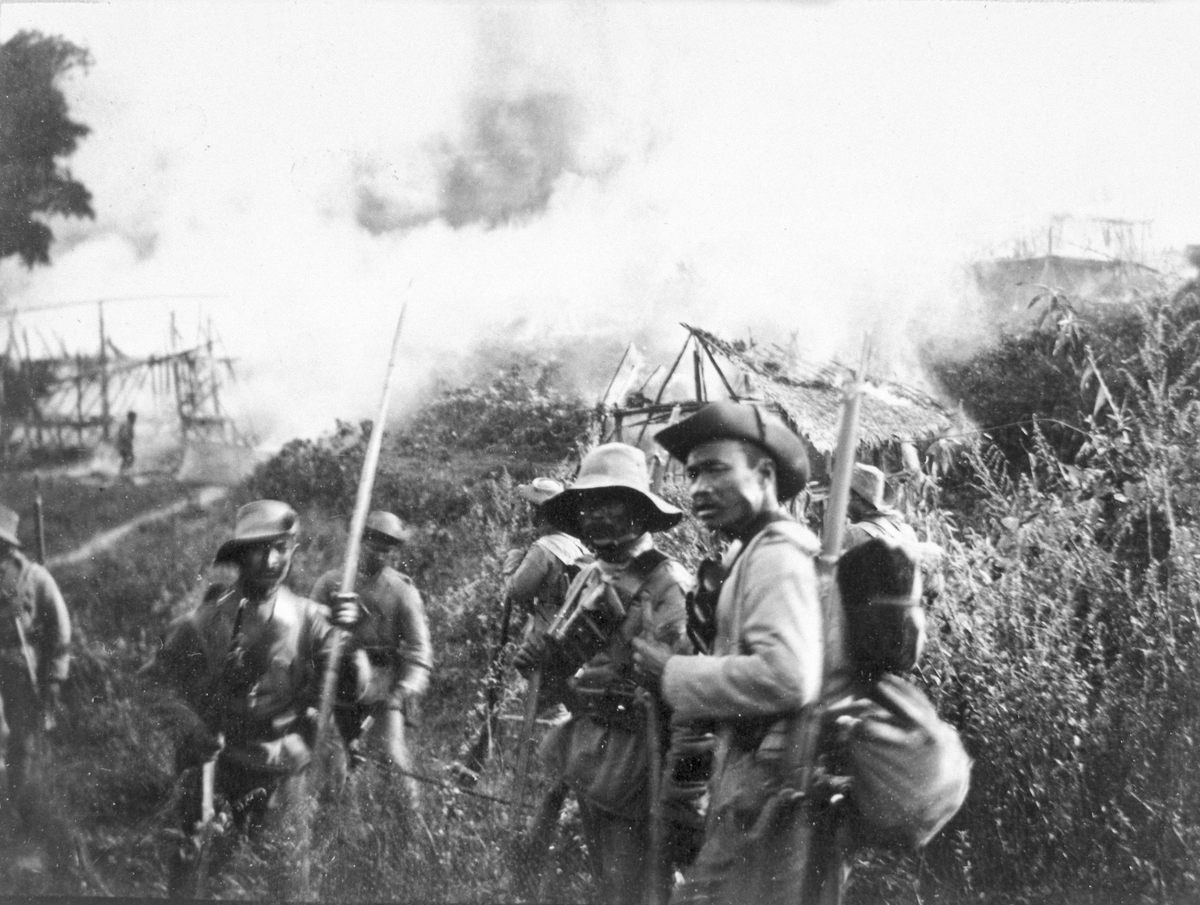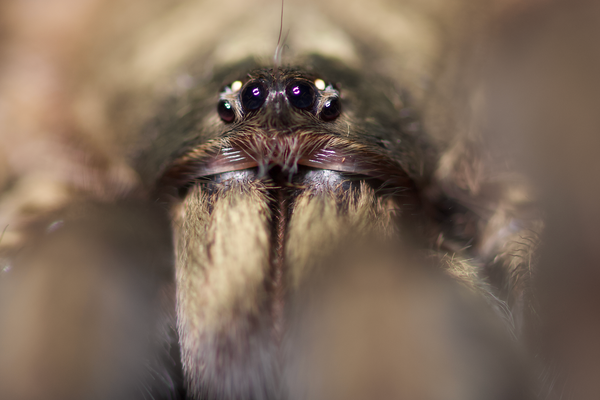The Biodiversity of India’s Siang Valley Rediscovered After an Infamous Colonial Expedition
A red velvet worm, jeweled corpse flower, and other rare species were found while retracing the route of the bloody 1911-12 Abor Expedition.
Armed with a walking stick, Priyadarsanan Rajan tackled a challenging 45-degree slope in the beautiful but rugged Siang Valley, within India’s northeastern state of Arunachal Pradesh. He was several miles deep in the remote Mouling National Park, traversing steep terrain while enduring relentless rain, leeches, and blood-sucking flies. Halfway up the hill, under a rock, he found a strange creature: a long, rich brown, worm-like animal with no eyes, about two dozen pairs of legs, and long antennae.
Unsure of what his find was, the entomologist put the creature in a specimen jar and took it back to his lab at Ashoka Trust Research in Ecology and the Environment (ATREE) in Bengaluru. His chance discovery would be one of dozens of specimens of flora and fauna, either new to science or presumed lost, that were found during an unprecedented exploration of the Siang Valley—a project that also retraced the steps of a much earlier expedition that had mixed scientific discovery with deadly colonial-era brutality.
Rajan had found a velvet worm, one of a group of “living fossils” so ancient—they’ve been around about 500 million years or more—that they have no close living relatives. The species he spotted on the hillside, the red velvet worm or Typhloperipatus williamsoni, was first described in 1911 by British biologist Stanley Kemp, who was a part of the infamous earlier expedition. After Kemp’s discovery more than 110 years ago, however, it remained an enigma until Rajan’s specimen.

“Its rediscovery after a century is important not just biologically, but also because of its evolutionary position,” says Prathapan KD, an entomologist at Kerala Agriculture University who was not part of the expedition. (Like many people in southern India, Prathapan goes by his first name and uses initials for his family name.) Prathapan adds that T. williamsoni is the first—and so far only—species in the genus to be described on the Indian subcontinent.
Kemp’s initial discovery occurred amid a British military operation in the area against the Indigenous Adi community, whom the British called “Abors.” In March 1911, British officer Noel Williamson—after whom Kemp would name the red velvet worm—led a party of some 40 men through the part of the region that was under British control. The group crossed into a semiautonomous tribal zone, against the advice of people in the nearby Adi village of Kebang. A rumor, possibly groundless, spread that Williamson was preparing to punish Kebang for warning him away. When word of the alleged plan reached the villagers, they killed Williamson and most of his men.
Retaliation for the deaths arrived in October 1911, when the British launched an operation they called the Abor Expedition, during which several villages were attacked and an unknown number of Adi people massacred.

At the same time these horrific events were unfolding, a group of botanists, biologists, and geographers, who were part of the same expedition, were surveying the region’s biodiversity and topography. They were among the first Europeans to explore the Siang Valley’s vast and undisturbed forests, lofty mountains, and deep gorges. Kemp and other members of the scientific survey documented species of worms, frogs, insects, and rare plants never before seen in South Asia. While difficult to fathom in retrospect, brutal military operations and scientific expeditions often occurred hand-in-hand during the colonial era.
“The Abor Expedition is a historical one. It was punitive, but also a scientific exploration,” says University of Calcutta ecologist Parthib Basu, who was not involved in the recent ATREE project.
The British expedition, which was conducted during a single winter and revealed only a fraction of the region’s biodiversity, proved important for providing at least a baseline of the valley’s ecosystems. More than a century later, the ATREE team, consisting of botanists, herpetologists, entomologists, and others, used the earlier surveys as a starting point for their more extensive project.
During three different periods in 2022 and early 2023, Rajan and his entomology team alone collected thousands of specimens, including more than 120 species of ants, 60 species of dung beetles, and 180 species of parasitic wasps. At least 30 of the finds are new to India. The teams’ identification work continues, with potential new-to-science species being analyzed, including a blue ant and a second species of red velvet worm.
Other ATREE teams made important discoveries about the valley’s plants. Despite being nestled in the foothills of the Himalayas and at least 3,000 feet above sea level, the region’s flora is closer to that of Southeast Asia than other areas of India. ATREE expedition botanist Ganesan Rengaian says that the valley’s plants tend to be more similar to those in Indonesia and Malaysia because of a topographical quirk—something British botanist Isaac Henry Burkill observed during the 1911 expedition.
The Siang River, which originates in the Himalayas, cuts a deep gorge to the southeast, forming the valley. The depth and direction of the gorge, combined with regional weather patterns, creates a virtual greenhouse that allows many species of flora to thrive outside their normal ranges.
“This was intriguing for me, how the climate changed the distribution of certain plant species,” Rengaian says.

Rengaian followed Burkill’s path along the river, including location descriptions for certain tree species. His team was able to rediscover many of the British botanist’s finds, including Diospyros apiculata, with spiky orange fruits, and the rare subtropical Xanthophyllum burkillii, named for Burkill and sporting five-petaled flowers and roundish fruits.
The team also found the stunning Sapria himalayana, or jeweled corpse flower, a rare parasitic plant, and a tree that Rengaian declined to discuss in detail, pending peer review, but suggested may be a species last described by Burkill and thought to be extinct.
The ATREE team’s finds—which will take years to identify and analyze—are particularly important as development threatens the valley’s biodiversity: Pristine forests are being cut to make way for plantations, and there are controversial plans to dam the Siang River for the country’s largest hydropower project. “There is a chance of losing the forest and plants,” says Rengaian.
As development spreads across the region, the ATREE team’s work, which built on the discoveries of a colonial-era expedition tainted by violence, may become a new baseline for understanding how much of the Siang Valley’s biodiversity is lost in the coming years.































Follow us on Twitter to get the latest on the world's hidden wonders.
Like us on Facebook to get the latest on the world's hidden wonders.
Follow us on Twitter Like us on Facebook